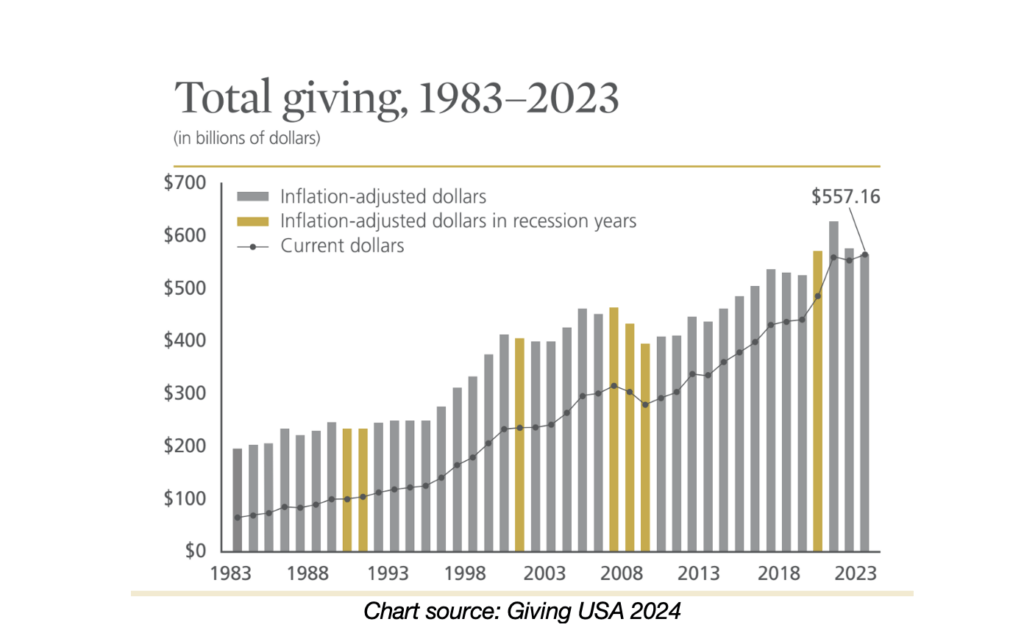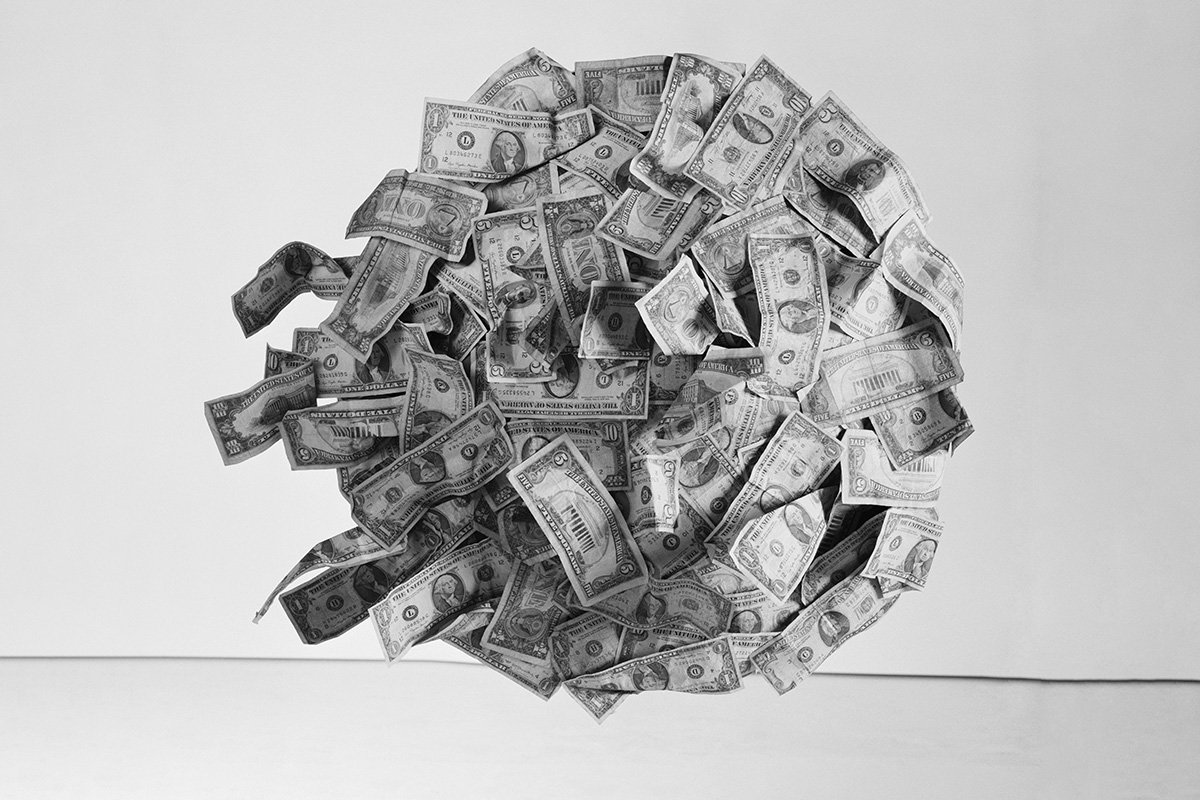
With inflation weighing heavily on consumers, overall charitable giving decreased by more than 2 percent in 2023, reflecting a challenging environment for charities and the organizations they support. So suggests the latest Giving USA report, which found overall charitable giving was valued at $557.2 billion last year, up 1.9 percent in current dollars since 2022 but down 2.1 percent when adjusted for inflation.
Giving USA positioned the increase in the overall dollar amount of donations as a positive development given the 3.4 percent drop in dollar-value donations in 2022, which that year’s report described as a “relatively rare occurrence” caused by difficult or unusual economic conditions.
Overall charitable giving decreased by more than 2 percent in 2023, reflecting a challenging environment for charities and the organizations they support.
Josh Birkholz, chair of the Giving USA Foundation and CEO of consulting firm BWF said in a press release that donations are “not yet back to the highs of pandemic-era giving, but there are some signs of stability.”
Giving USA estimates are mostly based on econometric methods developed by philanthropy and nonprofit sector researchers and are reviewed and approved by members of the Giving USA External Review Panel. Estimates are prepared by the Indiana University Lilly Family School of Philanthropy and are based on econometric analyses and tabulations of tax data, economic indicators, and demographics.
The Toll of Turmoil
Some practitioners say a decline in donations last year can be attributed to historically high inflation rates and the rising cost of consumer goods. Others suggest that chaotic world events have left would-be donors unsure.
“It really kind of feels like the world is on fire right now,” Cinira Baldi, chief development and communications officer for Project HOPE, told the Chronicle of Philanthropy in June. “There’s a little bit of people feeling like, ‘There’s so much going on, I don’t know if I can make a difference.’”
Unless there are triggers to give, such as newsworthy social causes, the sector can expect to see a continued decline in the giving landscape, Baldi added.
Among the external factors that may have influenced the flow of donations last year:
- Staffing shortages impacted nonprofits’ ability to deliver services and resulted in some entities reducing services or foregoing new grant opportunities
- The Supreme Court decision that considered race in college admissions unconstitutional could be a “barometer for indicating whether race-conscious philanthropy may be subject to the same limits as college admissions,” the report said
- The August 2023 Maui wildfires got an outpouring of support
- Donors gave in response to the conflict in Israel and Gaza
- Nonprofits adjusted to the end of pandemic-era government relief funding
“It really kind of feels like the world is on fire.”
Charitable Giving Declines When Adjusted for Inflation
While total charitable giving has increased or stayed flat every year since 1983, with the exception of four years—including 2022—that saw declines, when adjusted for inflation, total charitable giving has declined 11 times since 1983.
Sign up for our free newsletters
Subscribe to NPQ's newsletters to have our top stories delivered directly to your inbox.
By signing up, you agree to our privacy policy and terms of use, and to receive messages from NPQ and our partners.

The top destination for charitable donations was religion-focused groups, which received 24 percent of donations, up 3.1 percent year over year. Behind religion, human services and education had the second and third largest shares of donations, each with around 14 percent overall charitable contributions.
Just over two-thirds (67 percent) of donations given in 2023 were from individuals, 19 percent were donated through foundations, and 7 percent were given by corporations, which was up 3 percent from 2022.
Donor-Advised Funds on the Rise
The report found that donor-advised funds (DAFs)—investment vehicles that allow donors to contribute cash and non-cash assets and take an immediate tax credit on their contributions—were among the most rapidly growing forms of giving.DAFs allow donors to recommend contributions that DAF sponsors make to approved nonprofit entities. They also allow donors to take tax deductions, even though the funds may not be sent to charities until a later date. Critics say DAFs thereby facilitate wealth-hoarding.
Education organizations received the largest share of DAF grant dollars in 2022, accounting for 25 percent of the total, according to Giving USA.
Overall gifts to DAFs were up 9 percent between 2021 and 2022, with contributions reaching an all-time high of $85.53 billion.
DAFs…were among the most rapidly growing forms of giving.
The rising popularity of DAFs has raised concerns within the sector and beyond around financial transparency. As NPQ reported in April, the sponsor or organization that manages the DAF can give the donor broad privileges to direct grants to chosen recipients on whatever timeline they choose.
In November of last year, the IRS proposed regulatory changes to how one section of the US tax code—Section 4966, which was first codified in the Pension Protection Act of 2006—is interpreted. Proposed changes include broadening the definition of DAFs; taxing inappropriate “daisy chain” distributions, or the possibility of double-counting grants or gifts from one charity to another; and taxing the fees paid from DAFs to their donors’ personal investment advisors.











